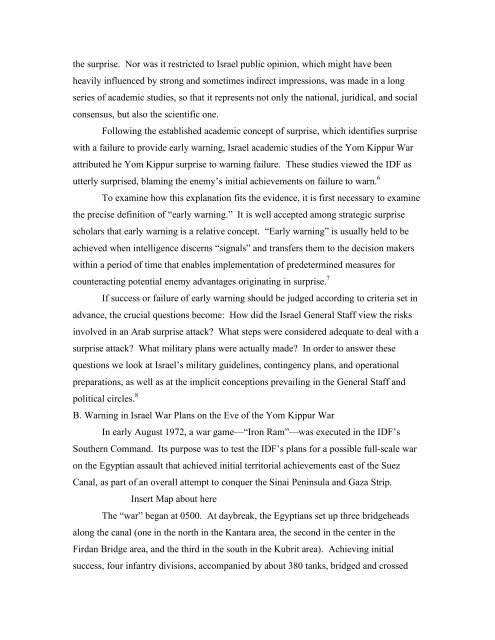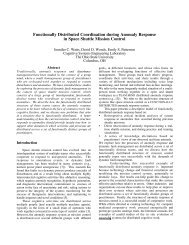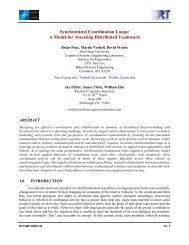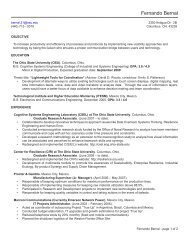Fundamental Surprises Zvi Lanir Decision Research 1201 Oak ...
Fundamental Surprises Zvi Lanir Decision Research 1201 Oak ...
Fundamental Surprises Zvi Lanir Decision Research 1201 Oak ...
- No tags were found...
You also want an ePaper? Increase the reach of your titles
YUMPU automatically turns print PDFs into web optimized ePapers that Google loves.
the surprise. Nor was it restricted to Israel public opinion, which might have been<br />
heavily influenced by strong and sometimes indirect impressions, was made in a long<br />
series of academic studies, so that it represents not only the national, juridical, and social<br />
consensus, but also the scientific one.<br />
Following the established academic concept of surprise, which identifies surprise<br />
with a failure to provide early warning, Israel academic studies of the Yom Kippur War<br />
attributed he Yom Kippur surprise to warning failure. These studies viewed the IDF as<br />
utterly surprised, blaming the enemy’s initial achievements on failure to warn. 6<br />
To examine how this explanation fits the evidence, it is first necessary to examine<br />
the precise definition of “early warning.” It is well accepted among strategic surprise<br />
scholars that early warning is a relative concept. “Early warning” is usually held to be<br />
achieved when intelligence discerns “signals” and transfers them to the decision makers<br />
within a period of time that enables implementation of predetermined measures for<br />
counteracting potential enemy advantages originating in surprise. 7<br />
If success or failure of early warning should be judged according to criteria set in<br />
advance, the crucial questions become: How did the Israel General Staff view the risks<br />
involved in an Arab surprise attack What steps were considered adequate to deal with a<br />
surprise attack What military plans were actually made In order to answer these<br />
questions we look at Israel’s military guidelines, contingency plans, and operational<br />
preparations, as well as at the implicit conceptions prevailing in the General Staff and<br />
political circles. 8<br />
B. Warning in Israel War Plans on the Eve of the Yom Kippur War<br />
In early August 1972, a war game—“Iron Ram”—was executed in the IDF’s<br />
Southern Command. Its purpose was to test the IDF’s plans for a possible full-scale war<br />
on the Egyptian assault that achieved initial territorial achievements east of the Suez<br />
Canal, as part of an overall attempt to conquer the Sinai Peninsula and Gaza Strip.<br />
Insert Map about here<br />
The “war” began at 0500. At daybreak, the Egyptians set up three bridgeheads<br />
along the canal (one in the north in the Kantara area, the second in the center in the<br />
Firdan Bridge area, and the third in the south in the Kubrit area). Achieving initial<br />
success, four infantry divisions, accompanied by about 380 tanks, bridged and crossed









